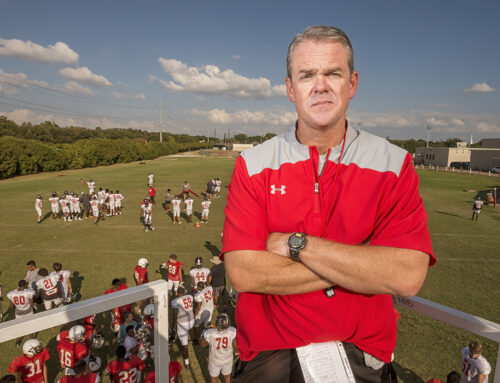It’s been nearly a year since real estate types last began speculating that Costco might be interested in the old Steakley Chevrolet site at Northwest Highway between Skillman and Abrams. Last we checked, though, Dallas Furniture Mart, which was supposed to vacate in August, is still having its “going out of business” sale.
Last July, the Dallas Morning News’ Maria Halkias, who has been closely following Costco’s movements, announced that the company’s first Dallas store would be on Coit between Forest and 635. Costco was looking for a location of at least 10 acres and had focused its search on North Central Expressway, she reported. TxDOT, which owns that property, priced it at more than $1 million an acre, but when TxDOT opened it for bids in December, no one bit.
Costco apparently changed its mind, Halkias reported, and she detailed why in a story that instructed Dallasites: “Don’t expect Costco to wage an expensive fight for land the way its chief rival Wal-Mart owned Sam’s Club will do. … Costco believes it always has the option to wait for a good real estate deal. It will walk away from land that it’s decided costs too much and did just that” with the TxDOT land.
Does Dallas really need a Costco? After all, we have plenty of big-box options, and Costco’s North Texas suburb locations are within reasonable driving distance — at least that’s what George Lewis concluded in his recent analysis. The analysis, with lots of interesting Venn diagrams, fails to take into account, however, that Dallasites don’t like to drive (that’s why we live in Dallas rather than Frisco or Colleyville, which I still can’t locate on a map and am beginning to think may be a Brigadoon-like suburb). And, all things being equal, well, they aren’t. Most of us snooty urbanites prefer Costco to Sam’s Club, both because of its better merchandise selection and because of its more-than-fair employee practices. But we don’t prefer it enough to drive to the suburbs more than a few times a year, which may or may not be worth a membership.
The same applies to exclusively Texan grocer HEB, which has started opening stores in the vicinity of Dallas, has several Central Market sister store locations in the city, and has been buying up quite a bit more North Texas land, according to another recent story by Halkias. We Dallasites are much less likely to drive a distance for our routine grocery shopping (though don’t put it past us to have five stores we visit to cross off our shopping lists). The appeal of HEB, however, is that one HEB could knock that list down to two or three stores, since the company has a reputation for good and ample merchandise (no more going to one store for toilet paper and another for quality produce) as well as fair prices.
However, HEB, like Costco, is in no rush to enter Dallas. In a recent story highlighting its presence in Houston, where the company is second only to Walmart in the market share, HEB executive Scott McClelland credited its success to using different store formats to target different demographics, and to a lot of research and analysis before opening anything. “A new store is a big investment, and we can’t afford to make a mistake,” McClelland says.
Most real estate experts believe that it’s only a matter of time before HEB expands into our city, but they also know the company’s reputation for acting with precision. “I think they’re always thinking what’s the trigger that will cause them to address Dallas,” said Mike Geisler of Venture Commercial in our February 2011 cover story that examined neighborhood real estate, including the “coveted corporations” that have yet to open here. (Since that time, three others we wrote about — H&M, In-N-Out and Trader Joe’s — have opened in Dallas.)
Experts wondered if the Albertsons-Safeway merger would give HEB a way into the Dallas market, but instead, Minyard Sun Fresh Market took over divested Albertsons and Tom Thumb locations. Still, all the upheaval in the local Dallas market, plus HEB’s success in places like Houston and interest in developing small-format stores (around 12,000 square feet, more the size of a Trader Joe’s, than HEB’s typical 80,000- to 90,000-square-foot size that rivals Walmart’s super centers) may indicate that the time is soon.
Or, it may not.
“A full-blown expansion north seems like a natural step to everyone else in Texas, but the 110-year-old family-owned and -operated business didn’t make it to the top of its game by rushing into anything,” Halkias says in her recent story.
“If you’re a fan of Texas’ largest independent grocer, don’t hold your breath.”






